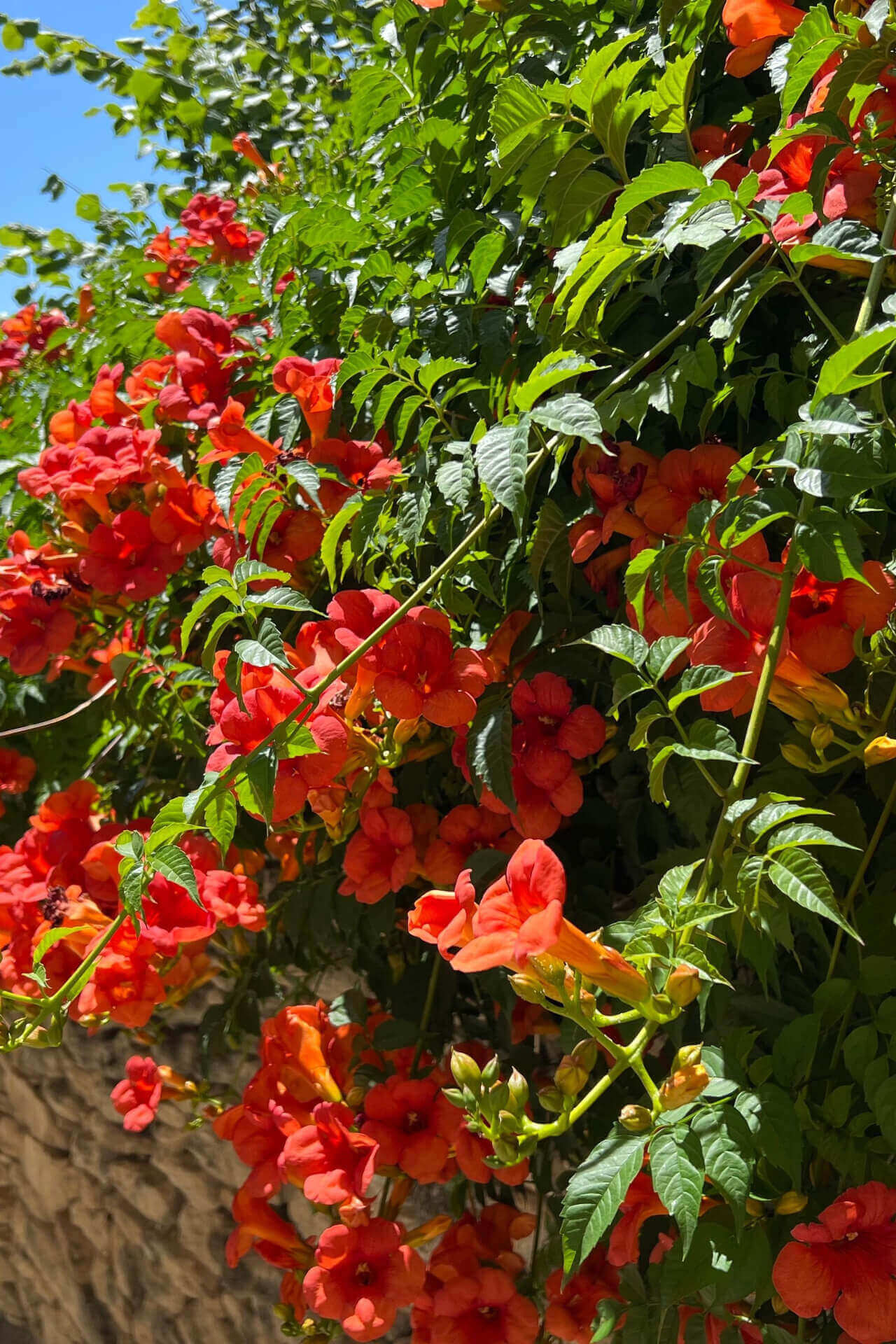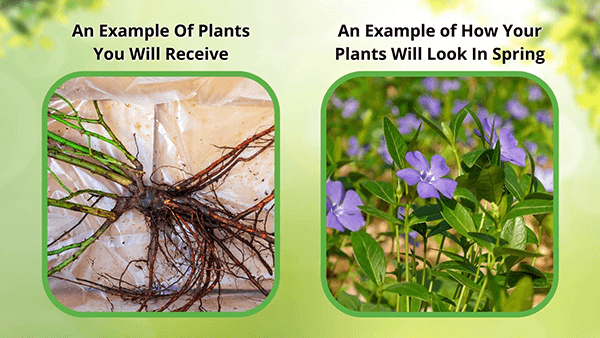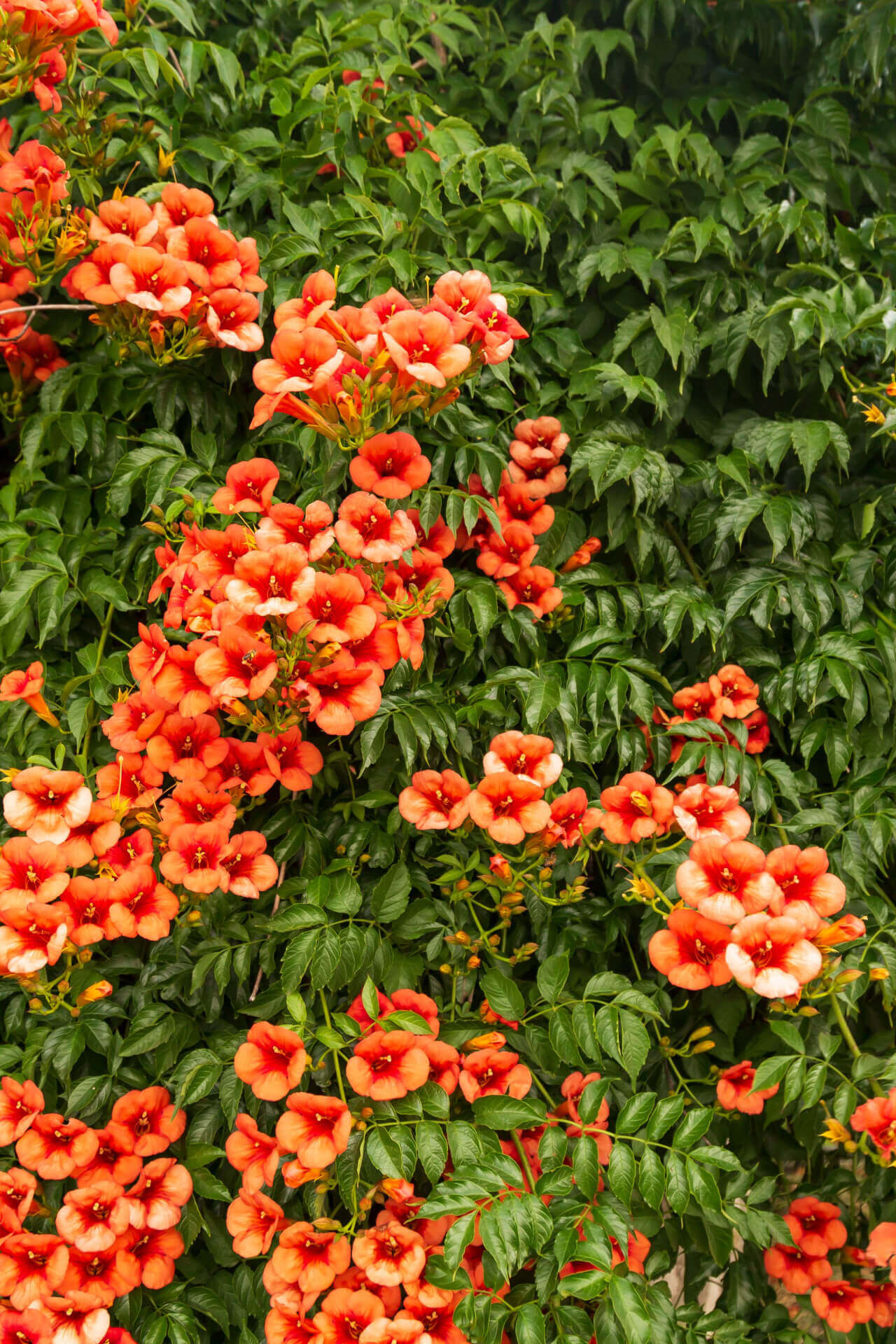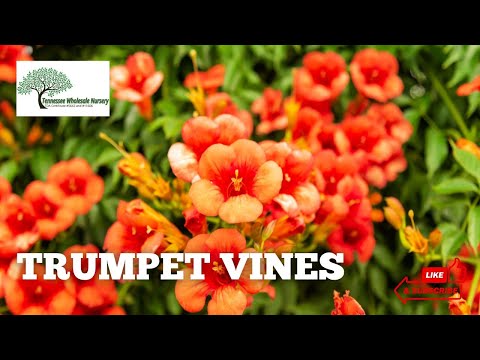Trumpet Vines For Sale
Trumpet Vine is a favorite for hummingbirds, birds, and any pollinator. Its elongated blooms are a deep reddish orange and attract hummingbirds of every size, shape, and color. It is a deciduous, woody plant that impacts any garden. Enjoy bright orange-red flowers that bloom during the summer months. Trumpet creepers grow with aerial rootlets and twining stems that wind around their support, such as a trellis, fence, or post.
Trumpet Creeper Plant Details
Family: Bignonaceae
Light Requirement: Full Sun
Water Needs: Adequate
Height: +30 ft.
Spread: Fast
Growth Rate: Fast
Bloom Time: Summer
Flower Color: Orange
Wildlife Value: Attract hummingbirds and butterflies
How to Grow and Maintain Trumpet Vine
This perennial grows tall and stretches towards whatever structure is closest, so its vertical growth means you have more horizontal room in your garden! It is a great choice for tight spaces and small gardens. This plant can easily grow up a trellis on a wall or porch, twining with its stem and wrapping with small tendrils aerially. If the space needs more support, you can use chicken wire to give the tendrils something more to grip onto.
If you need a low-maintenance plant that attracts all types of pollinators, look no further. There is no need to fertilize this vigorous grower; it is a fast grower that climbs up its supports quickly. You do not need to water unless there is a drought. What more could you ask for?
Grab your favorite pair of garden pruners! This plant requires pruning every fall to keep its growth manageable. Cut back the stems hard, don’t worry, it will come back growing in full force! This will allow new growth, which will send out the blooms the following summer.
Noteworthy Features of Campsis radicans
Beautiful green foliage, interesting seedpods, gorgeous flowers, and thick woody bark make the orange trumpet vine a statement in the garden all year long.
Trumpet Vine is a pollinator favorite that attracts hummingbirds, bees, and butterflies with its nectar filled trumpet like flowers. Birds love it, too! You will find birds nesting in its branches and taking leaves and seeds away.
Exposure
Trumpet Vine flourishes in complete sun to partial shade. For the best flowering, it prefers at least six hours of direct sunlight daily. However, it can tolerate some shade, though blooming may be reduced in less light.
Height at Maturity
Over 12"
Usage
Pollinator Plant
Shipped As
Bare root
Ships
USPS
Planting Zones
4-9




